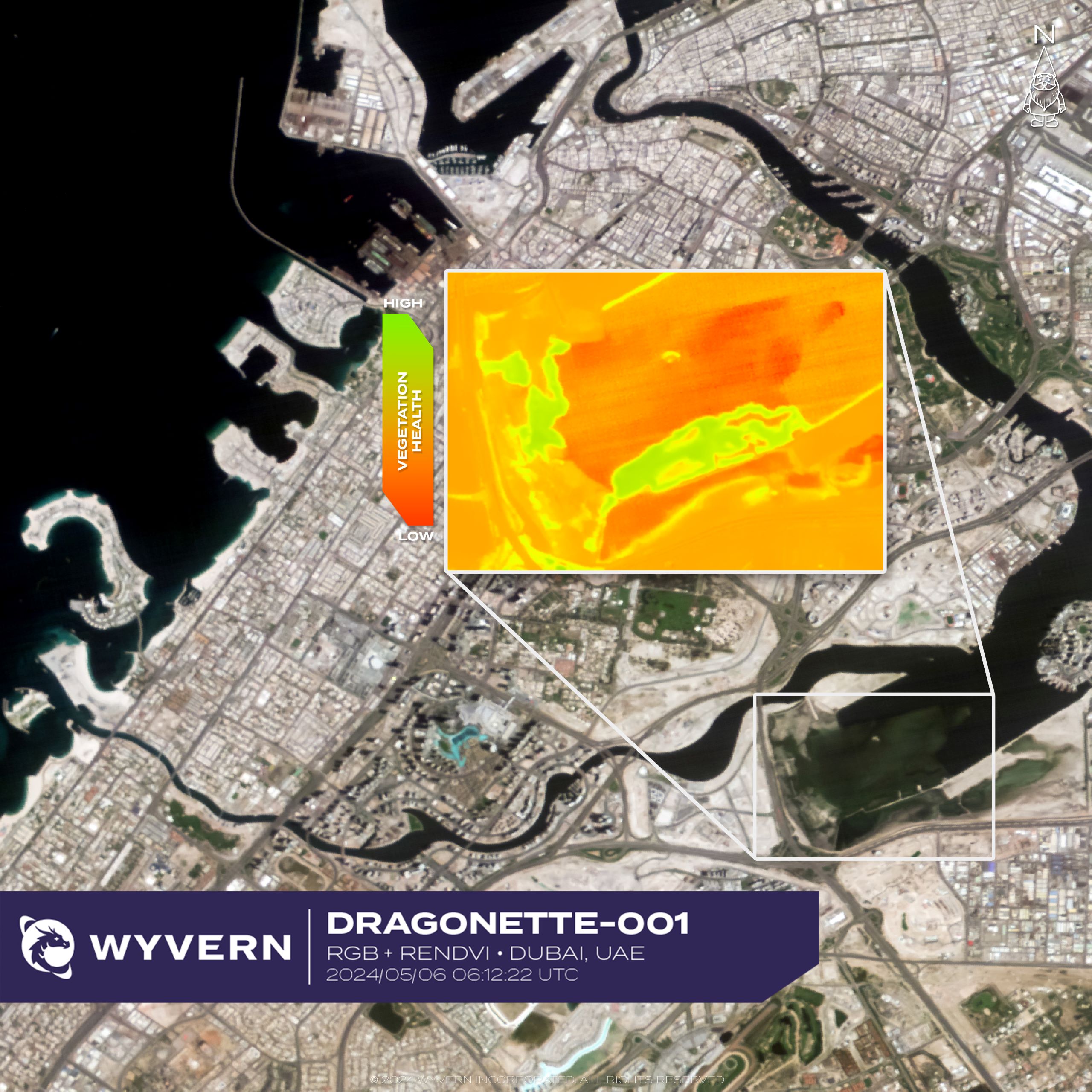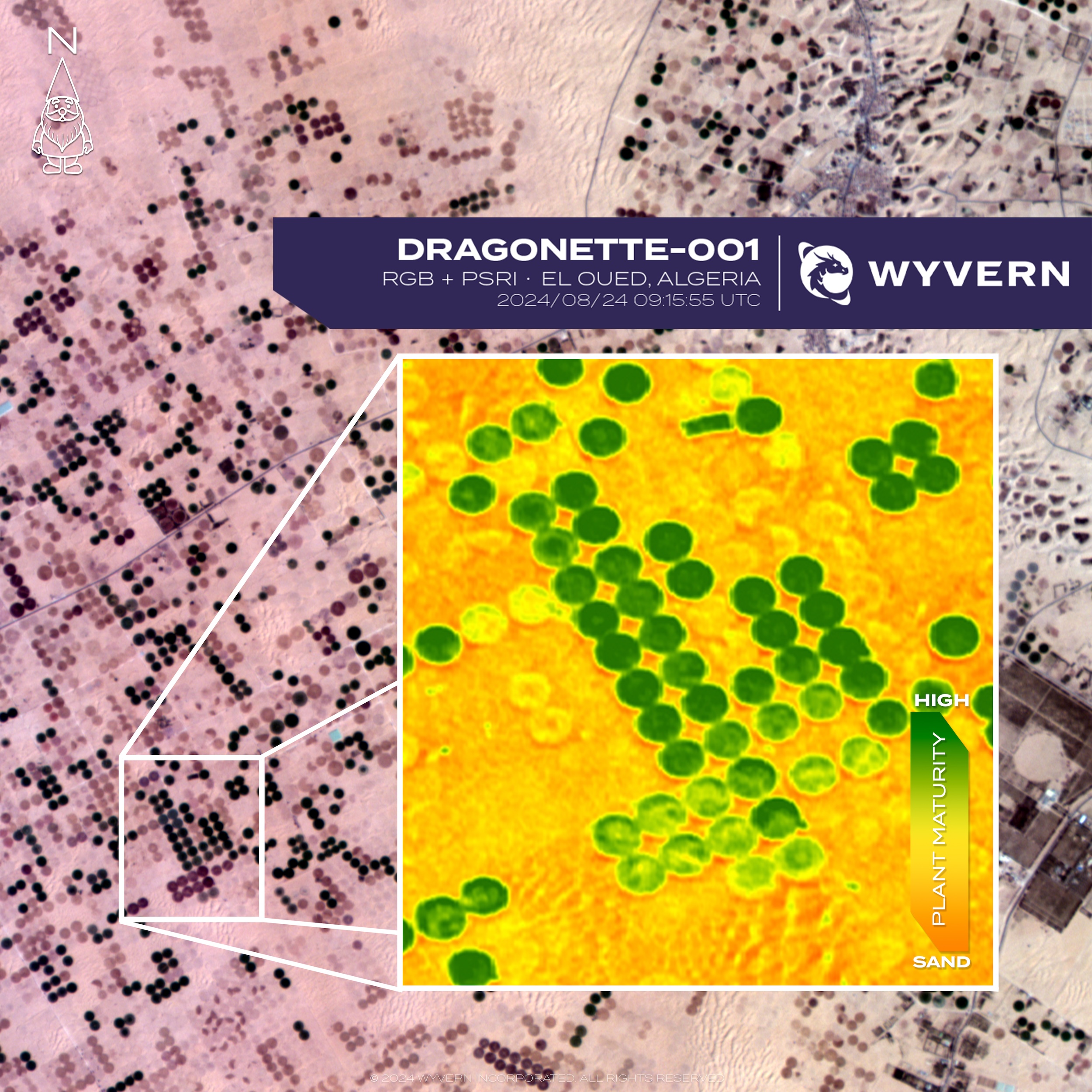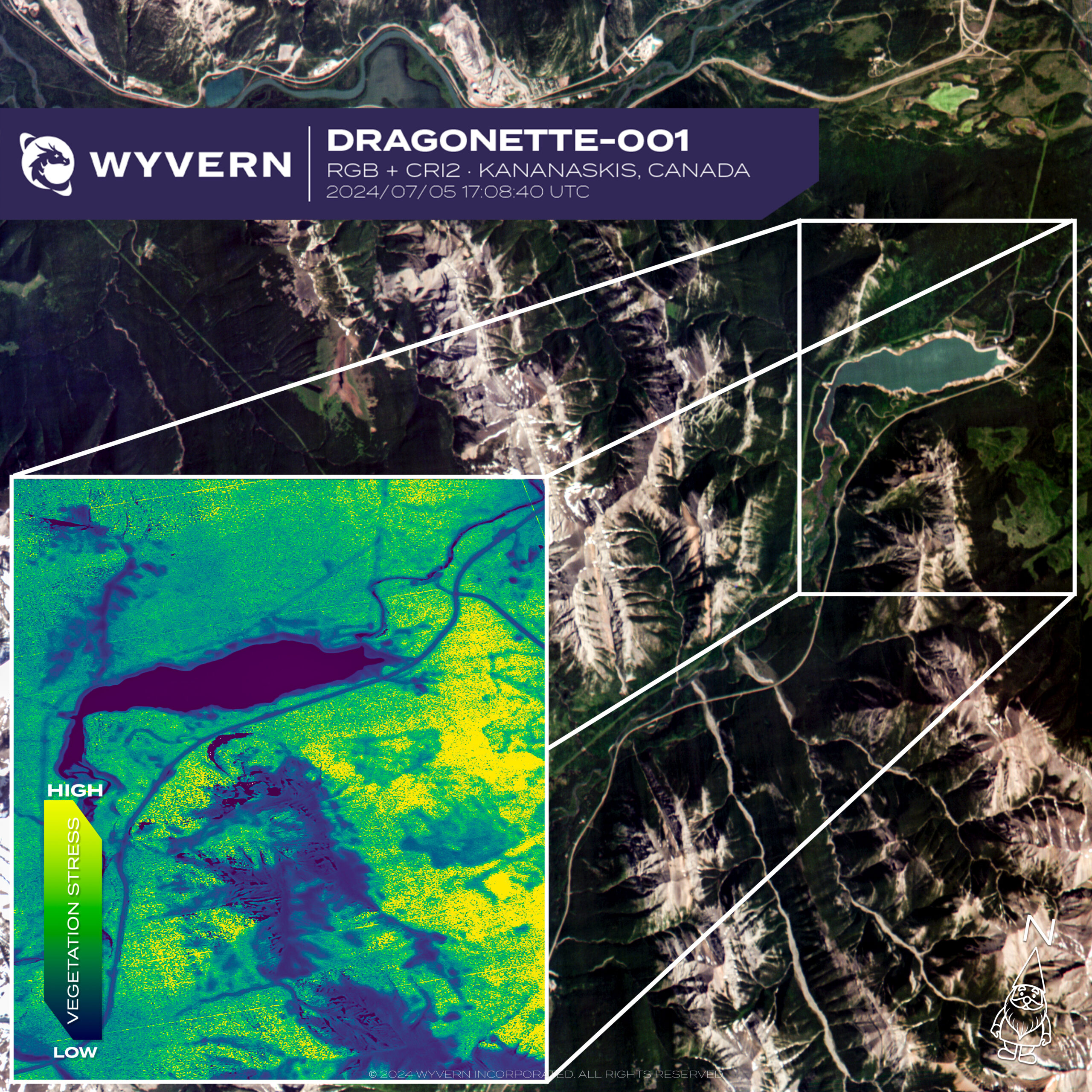Data Scientists & Analysts
After investing significant time and resources in procuring multispectral data collections, cleaning and processing the data, the results of your classification and segmentation models cannot clearly distinguish the necessary spectral signatures needed to enable the performance of your business application.
With limited spectral bands, your multispectral data sources cannot distinguish the unique attributes of your targets of interest from adjacent features.
If this sounds familiar, you’re in good company. In many cases multispectral data does not contain enough spectral information to extract the insights you need. Instead, Wyvern’s hyperspectral imagery might provide the spectral information you need to do your analyses.

Using our high-resolution red-edge spectral band in a vegetation index (RENDVI), chlorophyll concentrations and biomass density were analyzed in dense mangrove vegetation cover. Read the Post.

High quality models are built with high-quality, high-resolution hyperspectral data.
Better data from high-resolution hyperspectral satellites allows data scientists and geospatial analysts to more effectively separate signals from the noise.
- Improve analyses using hyperspectral data science
- Improve stratification of environmental characteristics
- Reduce and eliminate spectral mixing effects
Left: Center-pivot irrigation is the primary agricultural method for growing crops in the Algerian Sahara desert. Using a plant senescence reflectance index, crops ready to harvest are highlighted in dark green. Plants still in a growth stage are indicated in light green/yellow. Areas in orange indicate desert sand, where no crops are growing. Read the Post.
Create more certainty with spectrally-dense data cubes
Using high-resolution hyperspectral imagery you can:
- Improve target detection and feature classification accuracy
- Increase confidence in the results from data collections and analytics
- Improve trust by delivering better results
Right: Since the early 2000s, over 2.4 million hectares of Alberta forest have been affected by mountain pine beetle. To detect possible locations of pine beetle damage, plant carotenoid concentration map can be created, where high carotenoids (or vegetative stress) may indicate the presence of these pests. Read the Post.

Become a Customer
If you’re eager to delve deeper into the realm of hyperspectral data or have any questions about how it can revolutionize your industry, we’re here to assist you. Our team of experts is equipped with extensive knowledge and experience in harnessing the power of hyperspectral technology.
